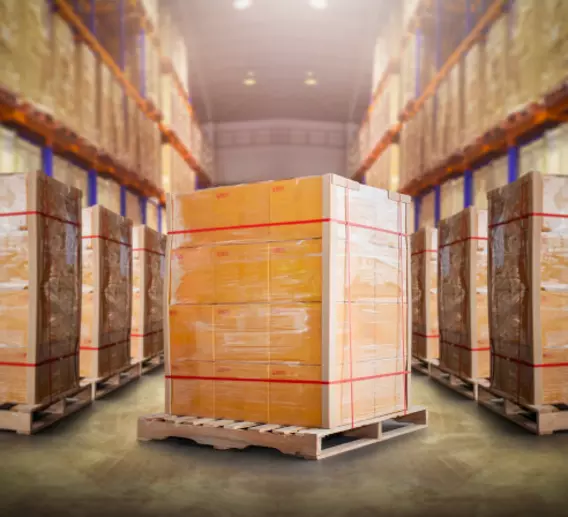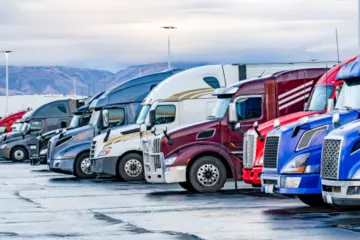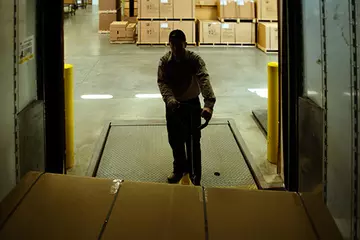Learn your options when shipping smaller loads
Looking for a transportation solution for when you have a load that’s too big for LTL? Volume LTL or partial truckload may come to mind, but there is another option: full truckload.
All three options have their pros and cons, and understanding the current truckload market can play a major role in making your decision. But first, what qualifies as volume and partial TL?
Volume LTL vs partial truckload
Volume LTL is when your freight is shipped via an LTL network and in LTL-suited equipment but is too large to qualify for traditional LTL freight. The cost structure in volume is different than that of LTL.
With volume shipping, you are paying for footage of the equipment or how much space your load will take up, as opposed to traditional LTL, where your price structure is more complex. For example, you can pay for between 14 to 56 feet of space with volume.
Alternatively, a partial truckload shipment is when you ship goods as traditional truckload, but only occupy some of the space within the trailer. Like in volume shipments, your load shares a trailer with another customer’s.
You are generally given a flat rate for these partial shipments. The catch is that you need a driver who’s willing and able to pick up and deliver multiple shipments directly. Your freight becomes harder to cover if brokers have to match your freight with another business’.
Here is a full list of pros and cons of shipping volume LTL vs partial truckload:
Volume LTL
As with any transportation service, there are strengths and weaknesses associated with each solution.
Pros
- Flexibility in pickup and delivery. This can be a particularly important factor in choosing between volume LTL and partial TL shipments. If you need a drop trailer, for example, at pickup or delivery, volume gives you that flexibility. A pup trailer can be dropped off on-site, which you can use to your advantage if you need more time to load/unload.
- Ample storage opportunities. Because volume LTL runs on an LTL network, moving between different terminals across the region or country, finding adequate storage becomes a problem of the past as you will be able to store your freight at one of these terminals until delivery is scheduled. This keeps your cargo safe and secure. Keep in mind that terminals will likely store your load for a window of time before charges may be applied. With big box appointments that are sometimes weeks out, this can be a huge bonus when shipping volume.
Cons
- Longer transit time. As opposed to any truckload solution, volume LTL takes more time to reach its final destination. This can affect your delivery dates or tight shipping schedules.
- Potential for increased handling. Because your load will change from truck to terminal to truck, there may be more freight touches along the way.
Partial truckload
This solution has its own set of advantages and challenges. Here are some to consider before booking:
Pros
-
Fast transit. Due to fewer stops from origin to destination, partial truckload can have a faster transit time than volume LTL shipments.
-
Reduced handling. Because there are fewer stops in a truckload shipment, handling of your loads is reduced, which can mitigate the risk of damage.
Cons
-
Difficulty in finding capacity. Capacity can be sparse for partial truckload shipments, which can limit options when it comes time to find drivers to haul your freight. Given the current state of full truckload freight, with rates as low as they are, drivers will generally prioritize full loads over partials.
-
Scheduling appointments can be difficult. With partial truckload shipments, the burden is usually on the shipper to make delivery appointments and adhere to a shipping schedule in order to make these appointments on time. Penalties can be incurred when appointments are not met. With partials, there are multiple loads going to different locations. This can exacerbate any scheduling issues.
A great alternative is shipping full truckload
Although volume LTL and partial TL are both viable options when shipping mid-size loads, FTL can still prove to be a viable option. A great benefit to FTL is that you get access to the entire trailer when brokering equipment, but this doesn’t mean you have to fill it with a full load.
You will gain some of the benefits from both solutions at a comparable price point.
These benefits include:
- Fast transit times
- Capability to consolidate shipments
- Reduced handling
- Ability to load as much or as little freight as you need within the 53 feet
If speed, efficiency and price matter to your business, then utilizing FTL in this current market can be an alternative solution.
But what if you have multiple loads that you would normally ship volume LTL or as partials? FTL can still work in this model. You will have the ability to book multi-stops — where your brokered truck can make multiple pick-ups and deliveries.
This allows you to move your freight at competitive truckload pricing while capitalizing on the speed and efficiency you may not necessarily see when shipping volume or partial LTL.
ArcBest can help with any solution you need
Selecting and executing the right transportation solution for your business can be difficult. ArcBest is here to help. Reach out today to get help deciding the best solution for you.






